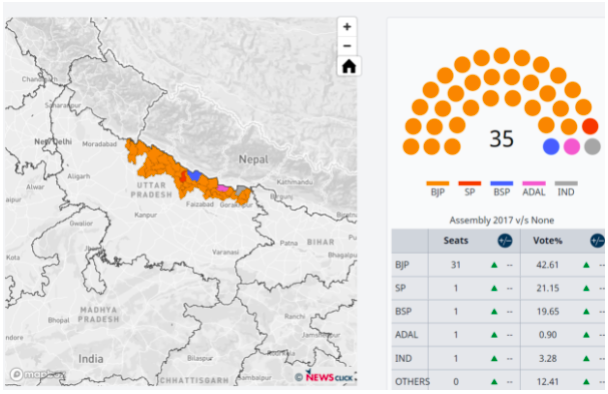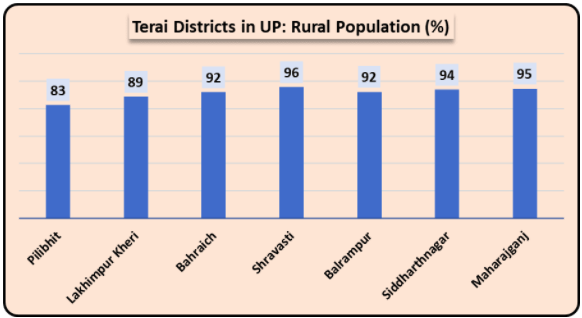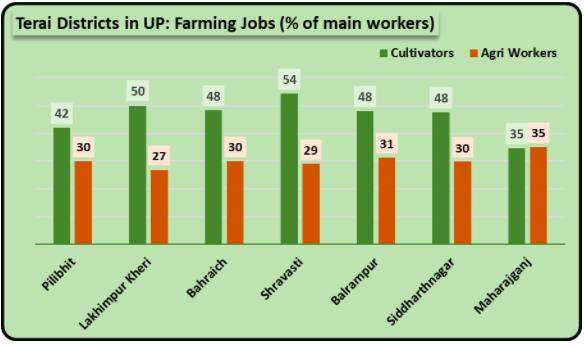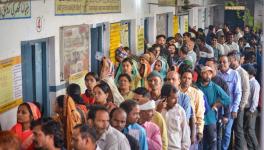After Lakhimpur, BJP Stronghold in Terai May Crack
Representational image.Image Courtesy: Kisan Ekta Morcha
The chilling mowing down of farmers walking on a dusty road, by a convoy of SUVs carrying BJP supporters, in a remote village of Lakhimpur Kheri district a week ago, continues to send shock waves. While Uttar Pradesh Chief Minister Yogi Adityanath was quick to announce ex gratia payments and government jobs to the kin of deceased, the political dimensions became clear soon. No Opposition party leader was allowed to visit the place and meet the bereaved families for a couple of days, the son of a Union minister who was alleged to have been sitting in one of the vehicles, and even accused of firing from a pistol, absconded, and his Central minister father, rushed to Delhi to meet Union home minister Amit Shah. The son finally surfaced on Saturday.
This whole episode has acquired so much electricity because of the Uttar Pradesh Assembly elections slated for early next year. Anger amongst the farming community could turn the tide against the ruling Bharatiya Janata Party (BJP). That explains the haste with which compensation to the deceased farmers’ families was announced.
It also explains why the sole Brahmin face (Union minster Ajay Mishra Teni) from Uttar Pradesh in Narendra Modi’s council of ministers is continuing in his post, despite all round outrage over his son’s alleged complicity in the murder. Adityanath and BJP are desperately trying to walk the tight rope between mass anger on the one hand, and their favoured caste equations on the other.
BJP’s Electoral Prospects in Terai
But will this work? In the terai region – the belt of lowlands just south of the Shivalik foothills of the Himalayas – there is deep revulsion and anger over the incident. This belt of seven districts in UP – Pilibhit, Lakhimpur Kheri, Bahraich, Shravast, Balrampur, Siddharthnagar and Maharajganj, from west to east – is one of the poorest and most backward regions of the state. For the past several years, the 35 Assembly constituencies in the terai have been dominated by BJP, which won 31 of these seats in the last Assembly elections in 2017. [See map below based on Election Commission data and available in interactive mode at https://electionsviz.newsclick.in/ ]

In the 2019 General Elections, BJP swept all the parliamentary constituencies, although in terms of Assembly segments, its share declined to 29 and Bahujan Samaj Party’s (BSP) tally increased to five. What s more relevant, however, is that in 2017, BJP got nearly 43% of the vote share, which expectedly increased to nearly 54% in 2019, with the small parties clubbed under ‘Others’, as also the BSP, losing out. Clearly, the terai, once dominated by the Samajwadi Party (SP) and BSP has slipped away and embraced BJP, like most regions of the vast state.
But things are different this time, and events are moving rapidly. The year-long farmers’ movement has upset BJP’s support base considerably, as was visible in Bihar and West Bengal elections in the past months. In UP, this effect is most visible in the Western region but it simmers below the surface throughout the state.
Largely Agrarian and Very Poor
The same discontent was existing in the neglected and invisible terai belt – but the Lakhimpur horror has exploded it into the limelight. The farmers’ discontent is likely to be more acutely felt in this belt because of its predominantly rural composition, as shown in the chart below, based on UP government data.

The high dependence on farming in the region is confirmed by the occupational data from UP government, which shows 70-80% of main workers involved in either cultivation or agricultural labour.

While some of the Western districts, like Pilibhit and Lakhimpur, have notable sugarcane production (similar to the adjacent West UP belt), the major crops in the Eastern side are rice and wheat. Another striking feature of the terai region is the extremely fragmented land holdings. In the seven districts, small and marginal land holdings make up 87% to 96% of all land holdings.
Put all the data together and you will get a picture of subsistence farming in the main. The demand for better returns, for more government support in prices and in making available inputs, for more procurement, and other such agrarian demands exists extensively. However, the region was also marked by low level of mobilisational politics.
That has changed now, with the Lakhimpur incident. The farm laws catalysed the resistance movement, which reached even backwaters like the terai. But the running over of farmers on purpose by the ruling BJP’s workers has ignited a fire that continues to burn throughout the belt, as it does among farmers elsewhere. And the more Modi and Yogi stick to their stance of “not bowing to pressure” whether on far laws or on bringing the Lakhimpur culprits to justice, the more this anger will spread, eventually reflecting in the Assembly elections next year.
Get the latest reports & analysis with people's perspective on Protests, movements & deep analytical videos, discussions of the current affairs in your Telegram app. Subscribe to NewsClick's Telegram channel & get Real-Time updates on stories, as they get published on our website.
























